Don't wanna be here? Send us removal request.
Text
Acute Kidney Injury
Acute kidney injury (AKI), previously known as acute renal failure, represents a medical emergency and encompasses a wide range of damage to the kidneys
(AKI) occurs when kidney function rapidly deteriorates, leading to an inability to maintain fluid, electrolyte, and acid-base balance. It contributes to increased morbidity and mortality. The severity of AKI results in significant healthcare costs. Consequently, there is a heightened focus on identifying new biomarkers for AKI. Detecting AKI earlier would ultimately preserve lives, improve patients' quality of life globally, and reduce healthcare system expenses.
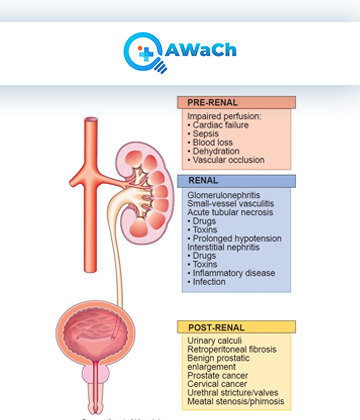
0 notes
Text
Quantitative Lateral Flow Assay
A quantitative lateral flow assay (LFA) is a type of in vitro diagnosis that combines the simplicity and rapidity of lateral flow assay technology with the ability to provide quantitative results, either by using a portable reader or a smartphone.
Lateral flow assays are commonly used for point-of-care testing, as they are easy to use, portable, and do not require specialized laboratory equipment. raditional lateral flow assays, like pregnancy tests, yield qualitative results that usually indicate the presence or absence of a target analyte. In contrast, quantitative lateral flow assays strive to gauge the concentration or quantity of a particular analyte within a sample. In numerous medical conditions, comprehending the analyte or biomarker's concentration holds importance beyond a binary yes or no outcome.

0 notes
Text
Thyroid Function Test
Thyroid function tests (TFTs) are a group of blood tests that assess the functioning of the thyroid gland.
The thyroid gland, located in the neck, produces hormones that play a crucial role in regulating various bodily functions, including metabolism, growth, and development. Common thyroid function tests include, Thyroid-Stimulating Hormone (TSH) Test, Thyroxine (T4) Test, Free Thyroxine (Free T4) Test, Triiodothyronine (T3) Test and Thyroid Antibody Tests. Thyroid function tests helping diagnose thyroid disorders, monitor thyroid function during treatment, and guiding medication adjustments. Interpreting the results relies on the laboratory's reference ranges and specific hormone levels. Consulting a healthcare professional becomes essential to assess the results within the context of a person's symptoms, medical history, and physical examination.

0 notes
Text
Urinary NGAL
Urinary NGAL (Neutrophil Gelatinase-Associated Lipocalin) refers to the measurement of NGAL levels in urine.
Healthcare professionals measure urinary NGAL levels using immunoassay techniques to detect and monitor kidney injury using NGAL. NGAL, a protein, is produced and released by various cells, including neutrophils (a type of white blood cell) and epithelial cells of the kidneys. NGAL serves as an early marking of kidney injury or insult, playing a role in the assessment and early detection diagnosis of acute kidney injury (AKI).When the kidneys are injured or under stress, NGAL levels increase rapidly in both blood and urine. Urinary NGAL Laboratory tests can measure levels to detecting and monitoring kidney injury. This will be especially valuable for early identification of. AKI, allowing for timely intervention and management.

0 notes
Text
Neutrophil gelatinase-associated Lipocalin
Neutrophil Gelatinase Associated Lipocalin is a protein that is primarily expressed in neutrophils, a type of white blood cell, as well as other cells such as kidney tubular cells.
One of the well-known applications of Neutrophil Gelatinase Associated Lipocalin is in the early diagnosis and monitoring of acute kidney injury (AKI). NGAL levels increase rapidly in response to kidney injury and can be detected in blood and urine. Measurement of uNGAL levels can aid in the early detection and prediction of AKI, facilitating prompt intervention and management. NGAL has also been studied in other conditions Neutrophil gelatinase-associated Lipocalin, such as cardiovascular diseases, sepsis, and various types of cancer. Its association with inflammation and tissue damage makes it a potential biomarker for assessing disease severity and prognosis. Research is ongoing to explore the full range of NGAL's functions and its potential as a diagnostic and therapeutic target in various medical conditions.
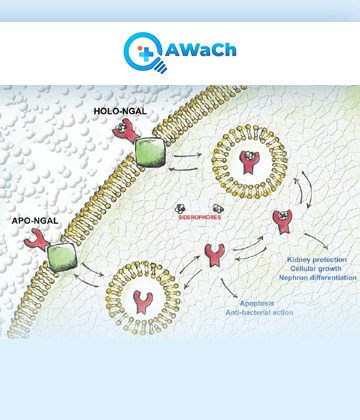
0 notes
Text
Lateral Flow Assay Uncut Sheets
Lateral Flow Assay Uncut Sheets uncut sheets are specialized materials.
The production of lateral flows involves precise placement and alignment of the components on the Lateral Flow Assay Uncut Sheets, ensuring proper flow and accurate test resultsAutomated equipment frequently handles the large sheets and executes precise cutting and assembly processes. After cutting the lateral flow assay test strips from the uncut sheet, additional steps include drying, packaging, and quality control testing. These steps are carried out before distributing the strips as ready-to-use diagnostic kits.

0 notes
Text
Lateral Flow Assay
A lateral flow assay (LFA), also known as a lateral flow test or rapid diagnostic tests (RDTs), is a simple and rapid diagnostic tool used to detect the presence or absence of a specific substance or analyte in a sample.
Lateral flow assay offer several advantages, including rapid results (usually within minutes), simplicity of use (no complex equipment or specialized training required), and suitability for point-of-care testing. However, it's important to note that LFAs may have limitations in terms of sensitivity and specificity compared to more complex laboratory-based diagnostic tests. We at QAWaCh Bio have developed Quantitative LFA-based testing that uses a combination of a LFA test card and a smartphone application to give results within 10-15 minutes at the bed-side of the patient. Our quantitative LFA platform, called Q-Plat, is made ultra-sensitive by incorporating indigenously made detection molecules in our lab called Q-probe, that greatly enhances the sensitivity of all our assays.
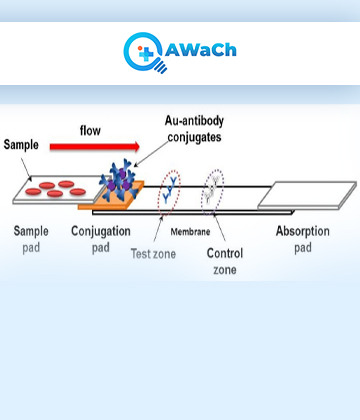
0 notes
Text
Kidney Function Test
Healthcare professionals use kidney function tests as diagnostic tools to evaluate the health and functioning of the kidneys.
These tests offer crucial insights into the kidneys' performance, facilitating the detection of abnormalities and aiding in the diagnosis and monitoring of kidney diseases or injuries. including chronic kidney disease (CKD) and acute kidney injury (AKI). Commonly used kidney function tests are: Blood Urea Nitrogen (BUN) Test, Serum Creatinine Test, Glomerular Filtration Rate (GFR) Calculation, Urinalysis involves analysing a urine sample for presence of abnormal levels of protein, blood cells, glucose, or bacteria, Albumin-to-Creatinine Ratio (ACR) and Imaging Tests like ultrasound, CT scan, or MRI. It is important to note that these tests are typically used in combination to provide a comprehensive assessment of kidney function.Healthcare professionals, typically nephrologists, interpret these tests by considering the results within the framework of an individual's medical history, symptoms, and other factors. This approach ensures precise diagnosis and the development of a suitable treatment plan. Additionally, various non-renal parameters such as age, gender, and muscle mass can influence the outcomes of these tests.
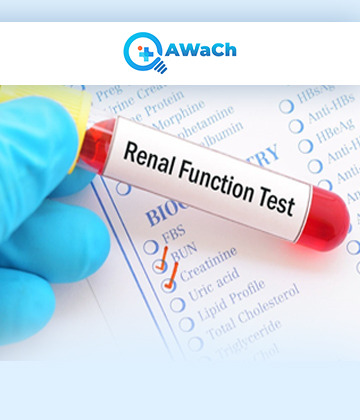
0 notes
Text
InstaNGAL® Test kit
Rapid and Reliable Kidney Injury Assessment: Introducing the InstaNGAL® Test Kit
Rapid and Reliable Kidney Injury Assessment: Introducing the InstaNGAL® Test Kit InstaNGAL®, developed by QAWaCh Bio Pvt. Ltd., is an innovative early detection test for acute kidney injury (AKI), based on estimation of urinary Neutrophil Gelatinase-associated Lipocalin (uNGAL) in human urine using a unique semi-quantitative and quantitative lateral flow assay platform. InstaNGAL® is a bed-side test that is intended for early diagnosis of AKI, based on levels of NGAL in human urine. This novel test kit is based on QAWaCh Bio’s novel patented technology ‘Q-Plat’, that uses combination of a lateral flow assay-based test card and smartphone

0 notes
Text
IVD Testing
IVD Testing refers to In Vitro Diagnostics testing, which involves the examination of samples taken from the human body outside of it, typically in a laboratory setting.
In vitro diagnostics refers to In Vitro Diagnostics testing, which involves the examination of samples taken from the human body outside of it, however in a laboratory setting. These tests are designed to provide information about a person's health or the presence of a specific disease or condition. In this paragraph IVD tests play a crucial role in diagnosing diseases, monitoring treatment progress, and screening for various health conditions. IVD testing covers an extensive array of medical tests, including LFA-based testing, Clinical Chemistry Tests, Microbiology Tests, Hematology Tests, Molecular Diagnostics, Histopathology Tests, and other Point-of-Care Testing (POCT). This testing plays a crucial role in guiding medical decisions and making medical interventions, enabling early disease detection, and monitoring treatment effectiveness. These tests are performing by trained laboratory professionals and require adherence to quality control, however it important and regulatory standards to ensure accuracy and reliability of results.

0 notes
Text
In Vitro Ddiagnosis
(IVD) In Vitro Ddiagnosis refers to the process of performing diagnostic tests or examinations on samples of bodily fluids, tissues, or other specimens outside the human body, typically in a laboratory setting or at home or office (in case of self-tests).
These tests are crafted to identify and detect diseases, conditions, infections, or abnormalities within the body. In modern healthcare, In Vitro Ddiagnosis plays a pivotal role by providing healthcare professionals with vital insights into a patient's health status.It aids in preventing diseases, detecting them early, and formulating treatment strategies. Healthcare professionals frequently use these tests to screen, diagnose, and monitor a variety of medical conditions. In Vitro Ddiagnosis Various types of in vitro diagnostic tests are accessible, including: LFA-based testing, Clinical Chemistry Tests, Microbiology Tests, Hematology Tests, Molecular Diagnostics, Histopathology Tests and other Point-of-Care Testing (POCT).
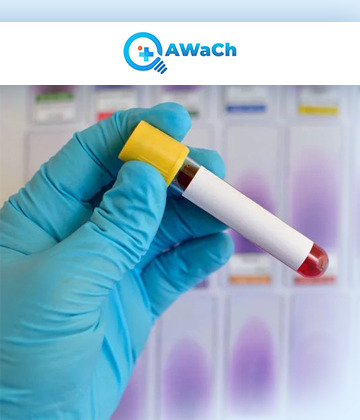
0 notes
Text
CRP Test
CRP test refers to the measurement of C-reactive protein (CRP) levels in the blood.
During these inflammatory conditions, C-reactive protein (CRP Test) levels can experience rapid and substantial increases, rendering it a valuable marker for evaluating and tracking various medical conditions. Healthcare professionals commonly conduct C-reactive protein (CRP) testing using a blood sample. There are different methods available for CRP measurement, including high-sensitivity CRP (hs-CRP) tests, which can detect even lower levels of CRP associated with cardiovascular risk.CRP testing is primarily used in the following ways:
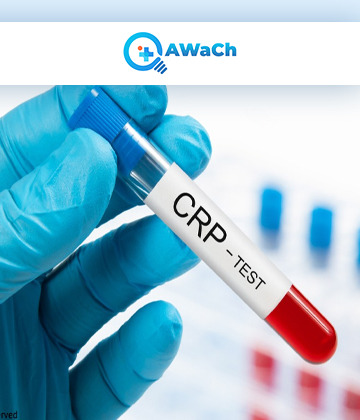
0 notes
Text
Covid-19 Antigen Test
A COVID-19 antigen test, also recognized as a rapid antigen test or rapid antigen detection test (RADT), constitutes in vitro diagnosis used to detect the presence of viral antigens associated with the SARS-CoV-2 virus, which cause COVID-19 infection.
Healthcare providers commonly use antigen tests to screen and diagnose , especially in situations requiring swift outcomes. The COVID-19 antigen test functions by detecting distinct proteins from the SARS-CoV-2 virus in respiratory samples, like nasal or throat swabs. These tests are recognized for their speedy results, often available in 15 to 30 minutes. Their value lies in swiftly pinpointing potentially infectious individuals, enabling prompt implementation of public health actions such as isolation and contact tracing.

0 notes
Text
Colloidal Gold
Colloidal gold refers to a suspension of gold nanoparticles in a liquid medium.
CD solutions contain gold nanoparticles that are exceptionally tiny, typically falling within the size range of 1 to 100 nanometers. These nanoparticles showcase distinctive optical characteristics, such as a distinct red, pink, or purple hue, attributed to the interaction between light and particles at the nanoscale. As a result, colloidal gold or gold nanoparticles find application in binding with detection molecules to provide visual cues in numerous diagnostic tests, thereby boasting extensive utility in diagnostic healthcare. CD finds diverse applications across various fields.

0 notes
Text
Chronic Kidney Disease
(CKD) Chronic kidney disease is a characterized by a gradual loss of kidney function over period of months or years.
The kidneys assume a critical role in filtering waste products and surplus fluids from the blood, however sustaining electrolyte equilibrium, and generating hormones that control blood pressure and stimulate red blood cell generation. As a result When the kidneys incur damage or operate inadequately, however the body can accumulate waste products and fluids, resulting in a range of complications. Major Causes of Chronic Kidney Disease could be Diabetes, High Blood Pressure, Glomerulonephritis, Polycystic Kidney Disease (PKD) and Recurrent Kidney Infections. Certain medications, kidney stones, urinary tract blockages, and prolonged obstruction of the urinary tract can also contribute to CKD.

0 notes
Text
Acute Kidney Injury
Acute kidney injury (AKI), previously known as acute renal failure, represents a medical emergency and encompasses a wide range of damage to the kidneys
(AKI) occurs when kidney function rapidly deteriorates, leading to an inability to maintain fluid, electrolyte, and acid-base balance. It contributes to increased morbidity and mortality. The severity of AKI results in significant healthcare costs. Consequently, there is a heightened focus on identifying new biomarkers for AKI. Detecting AKI earlier would ultimately preserve lives, improve patients' quality of life globally, and reduce healthcare system expenses.
What is Acute Kidney Injury (AKI) ?
In AKI, the underlying pathophysiology features a complex interaction between predisposing chronic illnesses, haemodynamic disturbances, nephrotoxic insults, and inflammatory responses, resulting in tubular cell injury and, ultimately, a reduction in glomerular filtration rate. Cardiovascular disease associates acute kidney injury (AKI) with heightened morbidity and mortality. In 2005, a landmark study of 71 children undergoing cardiac surgery showed that urine Neutrophile Gelatinase-Associated Lipocalin (uNGAL) and plasma NGAL (pNGAL), assessed 2 hours after cardiopulmonary bypass, had a high diagnostic accuracy for AKI (defined as a ≥50% increase in creatinine from baseline).

1 note
·
View note